After getting to sleep after 2 am, my husband Al and I were out exploring the town of Anchorage by 9 am.
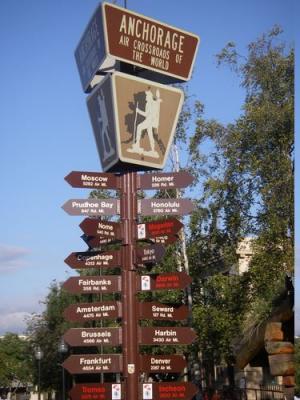 How far is it to where you live from Anchorage
How far is it to where you live from Anchorage
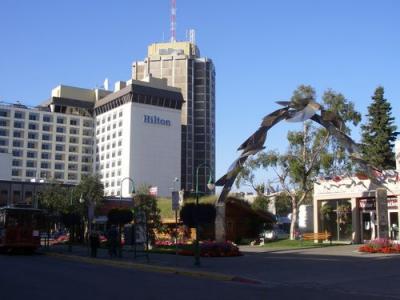 Anchorage downtown buildings.
Anchorage downtown buildings.
Anchorage downtown buildings.
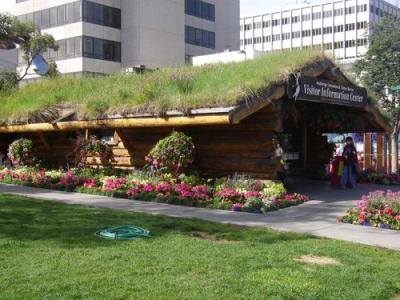 Information center building on 4th St. in downtown Anchorage
Information center building on 4th St. in downtown Anchorage
Information center building on 4th St. in downtown Anchorage
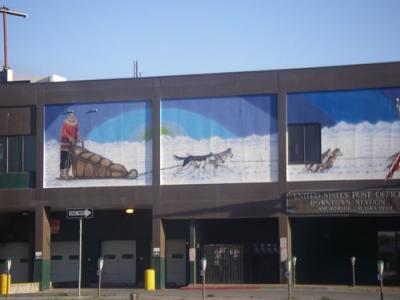 Anchorage post office mural.
Anchorage post office mural.
Anchorage post office mural.*
We discovered a display of day length each month in Anchorage and today’s weather report at the visitor’s center.
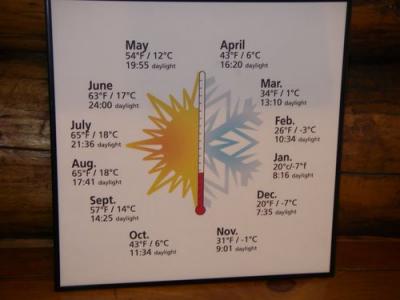 Average number of daylight hours each month in Anchorage.
Average number of daylight hours each month in Anchorage.
Average number of daylight hours each month in Anchorage.
Although the temperature was near 100 degrees F in Kingsburg when we left, you can see the weather forecast for Anchorage today.
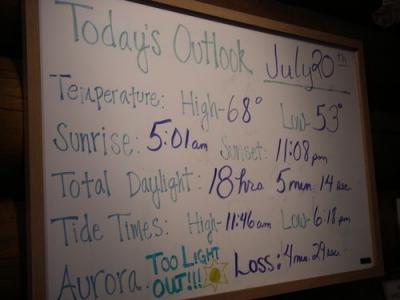 Weather forecast for today in Anchorage.
Weather forecast for today in Anchorage.
Weather forecast for July 20th in Anchorage.
Walking down 4th Street we met Cherie Biddle from the Native American Heritage Museum at a sidewalk display table. She told us that her ancestors were native Sami, native to northern Norway, and Yupik, native to western Alaska. Her Sami great grand parents migrated to Alaska from Norway in the 1800’s to help teach the native Alaskans the ways of the reindeer. She relayed to us the story of how reindeer are not native to Alaska; their natural range extends from Scandinavia to Russia, but not across the Bering Straits to Alaska. 1000 reindeer were brought to Alaska by Russians as a food source because the food sources of the Yup’ik’s and other native groups were being depleted by western hunters. The natives in Alaska did not know the reindeer’s habits. Cherie’s great grand father was part of a group of Sami who came to teach the natives about maintaining reindeer. They even brought 500 reindeer across the Atlantic with them to New York, across the US to Seattle, and eventually to Alaska. By the end of the 1800’s the reindeer increased in number to over 500,000. Today the number of reindeer in Alaska is much lower.
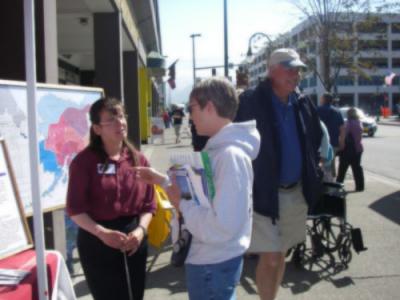 Cherie Biddle being interviewed about her native Alaska and Norwegian heritage.
Cherie Biddle being interviewed about her native Alaska and Norwegian heritage.
Cherie Biddle being interviewed about her native Alaska and Norwegian heritage.
Al and I discovered that the big event in town this week is the Alaska World Eskimo Indian Olympics. This sounded interesting, so we decided to go see what it was all about. For the past 45 years these Olympics have taken place, usually in Fairbanks. Native Alaskans and other American natives are invited to compete in these special Olympics each year, which gives these people an opportunity to visit and share their different cultures with each other. There is a crafts fair, native dancing, and many competitive events; not the traditional Olympic events that we are more familiar with, but events important to the native Americans. We observed the ear pull competition. In this competition a twine loop about 3 feet in diameter is looped around the ears of two competitors who sit facing each other. At the signal, the competitors have a tug-of-war of sorts where the idea is to pull until one competitor cannot stand the pain and gives up. This competition shows which individual has the strongest concentration and pain threshold, valued abilities. Competitors greet each other showing respect by nodding or shaking hands before and after the event.
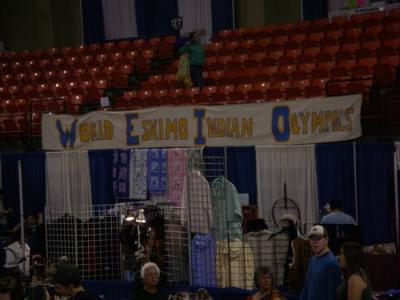 Sign dispolayed at the World Eskimo Indian Olympics.
Sign dispolayed at the World Eskimo Indian Olympics.
Sign displayed at the World Eskimo Indian Olympics.*
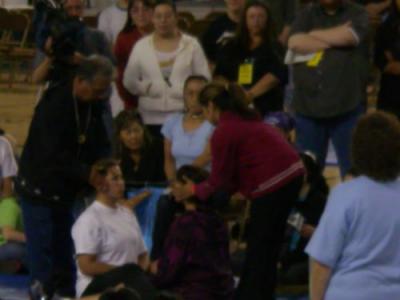 Ear pull competition pitting ear strength and pain threshold of competitors.
Ear pull competition pitting ear strength and pain threshold of competitors.
Ear pull competition pitting ear strength and pain threshold of competitors.*
We also watched a fashion show. This was a competition of sewing the most authentic native clothing, which was displayed by native American models. We were amazed by the incredible beauty and detail of these designs!
Fashion
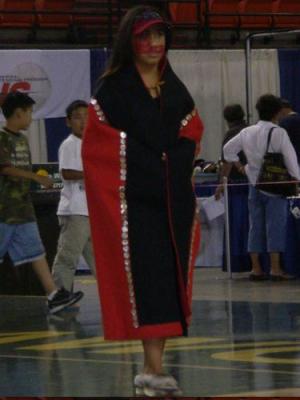 Image 21 in native dress competition.
Image 21 in native dress competition.
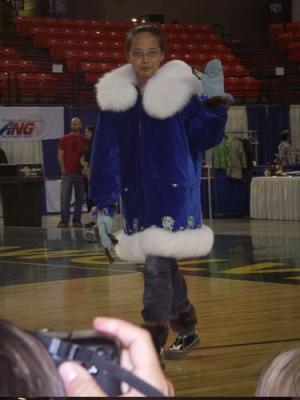 Image 5 in native dress competition.
Image 5 in native dress competition.
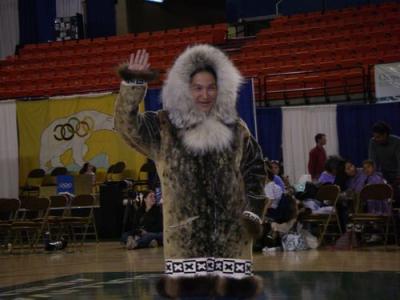 Image 1 in native dress competition.
Image 1 in native dress competition.
